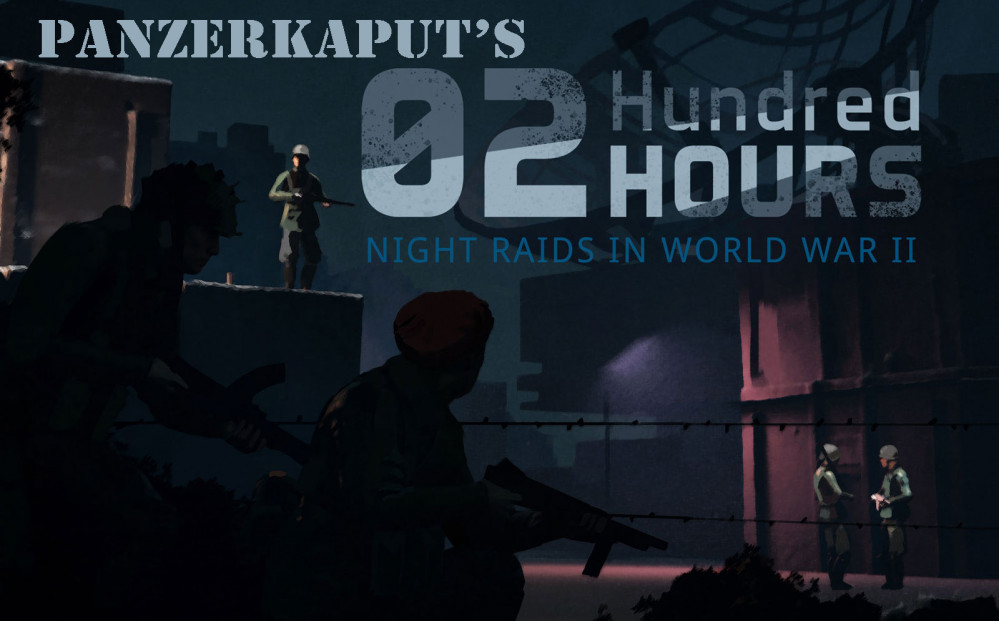
Broadsword Calling Danny Boy, Broadsword Calling Danny Boy
Oh my I have decided to paint my British first but oh my what colour is the webbing.
I found this on the net and I thought it might be useful.
The point of this article is to make people aware that they can greatly improve the appearance of their WW2 British figures by painting the webbing equipment , and to promote more research on the subject of “ Blanco “, the use of which affects the colour one might choose.
This is a topic I approach with some trepidation , since the subject of colour always starts arguments , because its interpretation is very subjective ; however I think the information I’ve compiled is quite interesting , and certainly relevant to my own models, and thus might be of interest to others.
British Webbing was all issued in a pale tan /khaki colour , some yellowish , some slightly greenish or neutral . The colour varied somewhat depending where it was manufactured : typically the Canadian manufactured versions were a strong yellow ochre shade.
Most of the 1/6th offerings are too pale , and the texture is greatly improved by painting anyway : it unifies the surface of the various fabrics used to make them. Use variations of Vallejo 914 Green Ochre , or 880 Khaki grey, lighter or yellower as you prefer .You can see the problem in this pic :
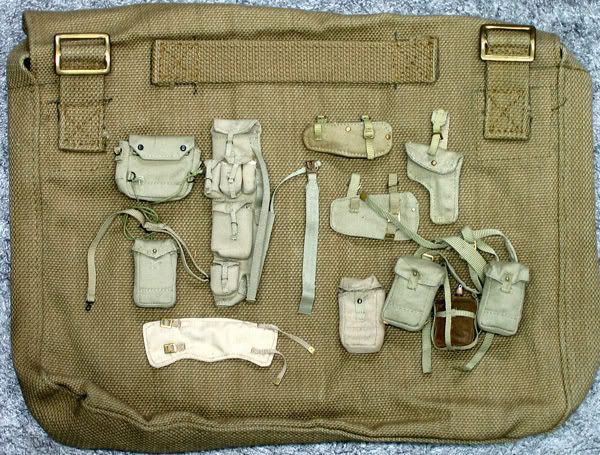
All soldiers issued with a set of webbing would have applied a commercial cleaner known as“Blanco “ at some time to their own personal webbing : originally developed by Pickerings before the Great War to cover stains on webbing by applying a matching cleaner, this had developed into a range of colours by WW2 , and its application could modify the colour considerably . It was used at one extreme to make it look smart , and at the other to help with camouflage .
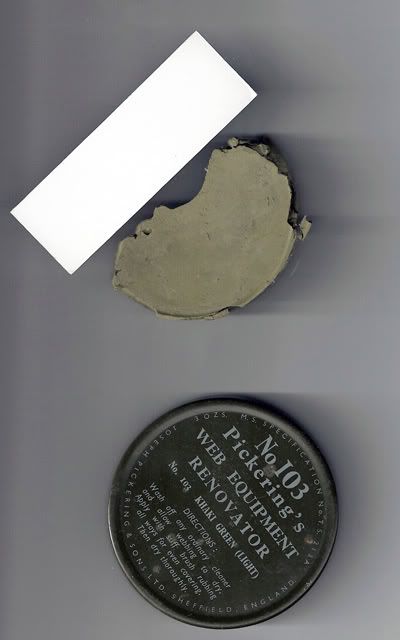
Thanks to Richie for this sample .
The different companies producing it ( Pickerings , Properts etc ) had their own shades , which were supposed to conform to War Office specifications , but there was inevitable variation.
Which shade was used depended on Regimental practice and Theatre of War . It was not unknown for the battalion to use one colour for parades , and another when posted overseas . Unfortunately we can never be sure exactly which shade was used from B/W pics , and colour pics are pretty rare , so unless we have veterans’ testimony we shall never know.
These colour pics are an indication : (thanks to woodlander , Allan W and The Saint for finding some of these ) the quality of some of them is pretty dreadful , but they do at least prove the point that webbing was not worn in the pale colour provided by the 1/6th manufacturers :

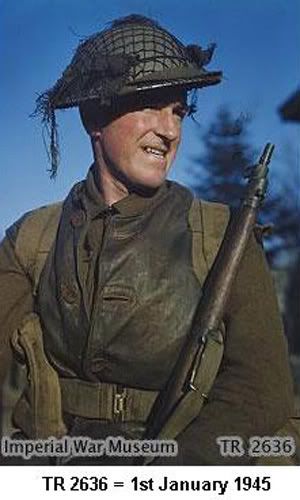

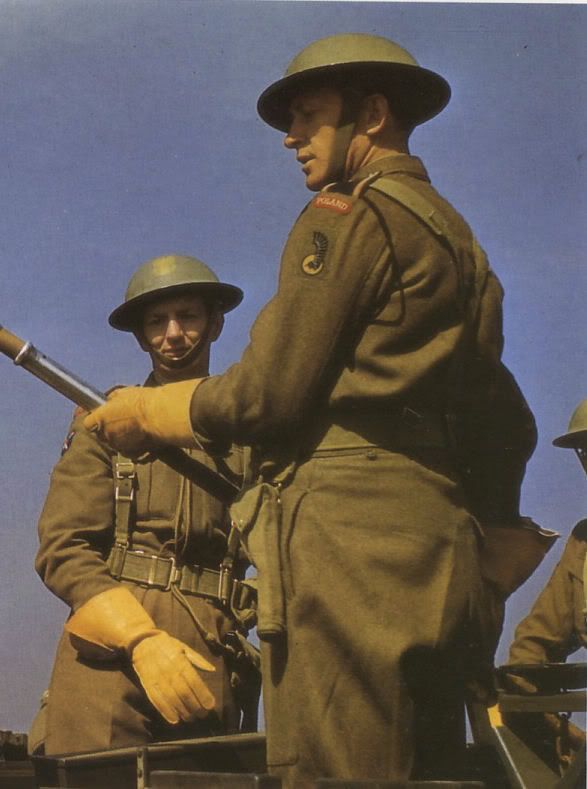
Most of these appear to show Khaki Green Light .
This one shows a mid-olive : might be faded KG3 :

And these chaps , taken in strong sunlight and with a yellow cast I can’t remove with photobucket , may be wearing Buff or Khaki : I doubt they never used Blanco , since this is training at Bovington , and there would be lots of occasions for parades :

After a great deal of help from Chris Woffenden , Richie Elbourne and Richard Ingrams , I am now certain about four shades : there were definitely several others , but I don’t have exact enough evidence to produce names and matches for them at present.
Here’s a colour chart , with suggested mixes from the Vallejo range : ~
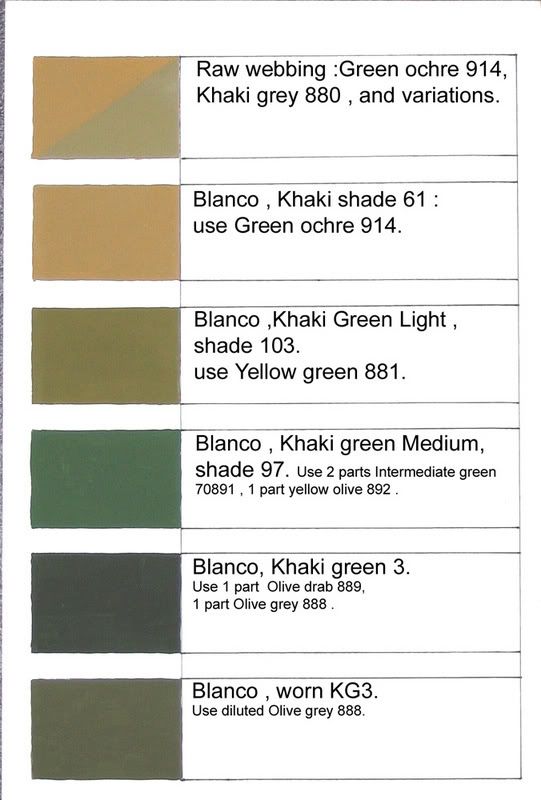
[ERROR : THE SECOND COLOUR DOWN IS ACTUALLY “BUFF ” RATHER THAN KHAKI 61. For the Khaki 61 please look at the top chip, right : Vallejo Khaki grey 880 .]
The exact shade would depend on how thickly it was applied .
Broadly , in 1939, as far as we can tell , all the colours were available , and the colour pics we do have suggest that KGL and Khaki were the commonest shades throughout the war : if in doubt , use them .
In the Desert and Sicily , the webbing was scrubbed rather than blancoed , and bleached by the sun , which made it appear a very pale straw colour.
In time for D-Day , and therafter in N.W Europe and Italy , judging by veterans’ testimony , the dark olive green KG3 seems to have been more popular , though the Khaki and the KGL were also still in use .
Troops in the Far East ( essentially Burma & Malaya ), who were based in India , originally wore pale Khaki Drill uniforms , and their webbing was coloured to match.
After the initial catastrophic defeats , the uniforms were hastily changed to jungle green , and the webbing vat-dyed to match . It was so damp in Burma that blanco would have been useless anyway ( it’s watersoluble ) .The webbing colour quickly faded to a grey-brown shade .
In the field, replacement items would probably remain in the raw state , and things like Utility pouches , Bren Hoglegs etc. would probably never have been Blancoed in the first place : on a model , it’s best to paint them raw webbing colour .
Troops setting out for a particular operation ( typically , the Airborne ) or Theatre would almost certainly have travelled with their personal webbing newly blancoed for camouflage : service in the field would have faded and dirtied it pretty quickly .
Snipers in N.W .Europe blancoed their webbing green( probably KG3 ) in the field for camouflage , and painted their brasses with green paint ( personal testimony ); but I don’t think most other infantry would have bothered in combat zones .
The British Army was inordinately fond of bullshit : for parades , all units would blanco their personal webbing in the shade preferred by the Regiment : these could be rather eccentric shades , such as black or straw yellow , and all brasses would be polished to a mirror finish.
The Military Police always used white webbing , even in combat zones : their role was largely traffic direction and prisoner handling behind the frontline.
Brayley & Ingram’s “ WW2 Tommy “ has lots of examples of blancoed webbing, and though many of their pics show a rather chaotic jumble of blancoed and unblancoed items, this is no fault of theirs : the real blanco is very rare collector’s item nowadays , and too precious to be used for preparing parade-finish webbing for a book .
I cannot urge you too strongly , if you want to understand British equipment and uniforms , to get these books :
Brayley & Ingrams :
“ The British Tommy in WW2 “ ; “ Khaki Drill & Jungle Green “ : both Crowood press .
Brayley : “ British Webbing equipments of the two World Wars “ Europa Militaria No.22 ,
Gordon :” The Equipment of the British Soldier “; one of three paperbacks on Uniforms , Weapons and Equipment.
I think it’s worth emphasising that ALL the colours were in use through the war : I’ve found no evidence that everyone on D-Day , for instance , wore KG3 , anymore than any other colour; or that the BEF all wore pea-green : I would be delighted to be proved wrong if someone can produce better evidence . These ideas , perhaps the result of re-enactment societies’ activities , can achieve the status of urban myths .
To help out , without infringing copyright by copying from books , here are some pics of my own figures to show the variations that were in use in different Theatres : they are result of some research , but are merely an indication of colour , rather than absolute references . All these are rebuilt scale webbing sets rather than straight out of the box , but the colours will work equally well on the commercial versions: ~
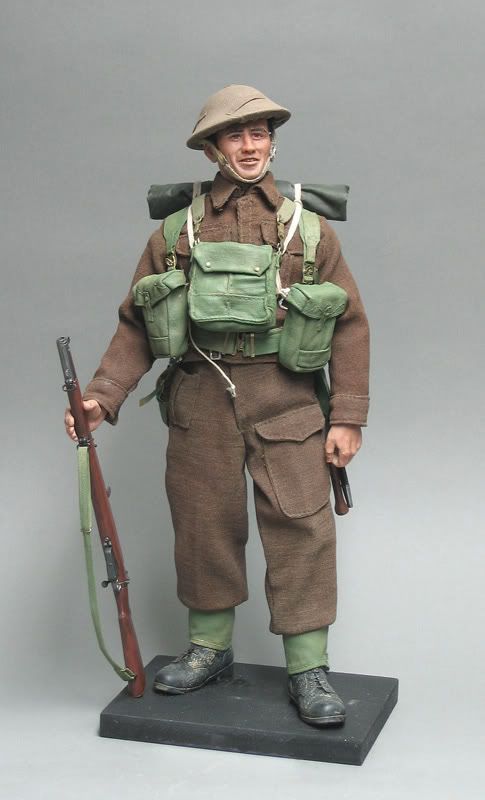
BEF 1940 , wearing Khaki Green Medium shade 97 : mixing this without it looking very bright is tricky , and I admit this might be a bit bright.

Western Desert : scrubbed and bleached webbing , no Blanco .
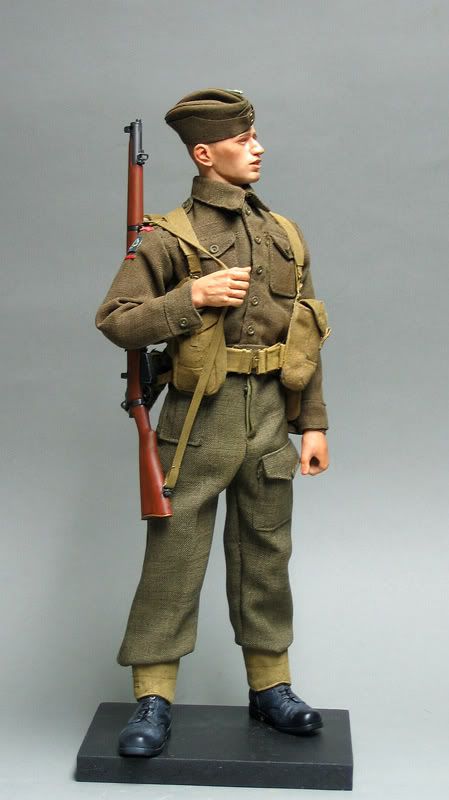
KOYLI 1943 : Khaki Blanco , shade 61 .
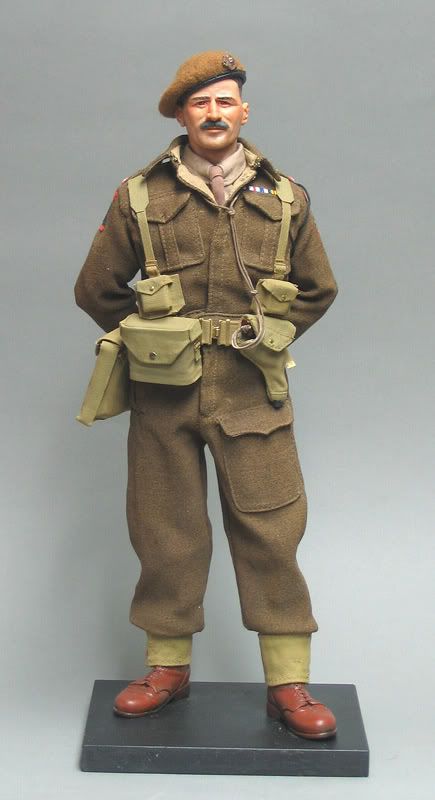
Officer’s set : Khaki Green Light : this is , I reckon , the commonest colour : we were still using this in the Cadet Force in 1964 !
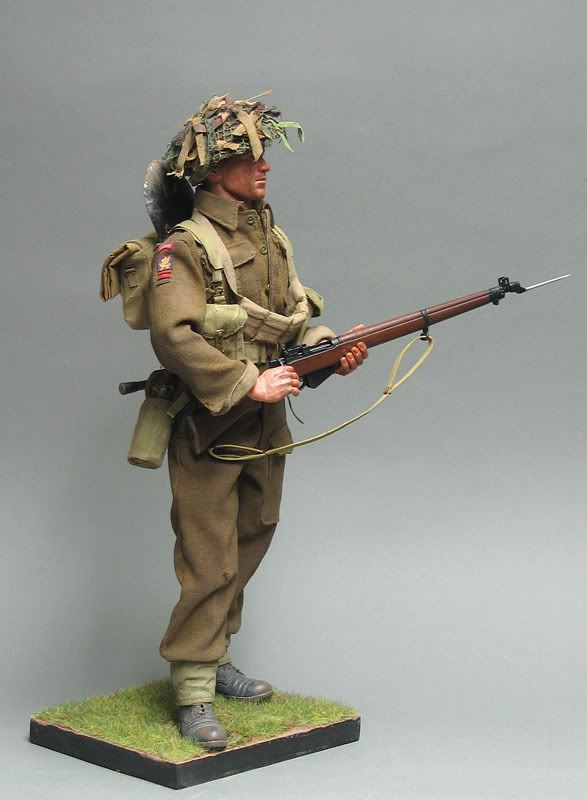
Dorsets in Normandy : Khaki Green Light again, but worn and faded .

D.of Ws before D.Day : Khaki Green 3 : this is real Blanco on this model !
A thick application produces this dark Olive colour .
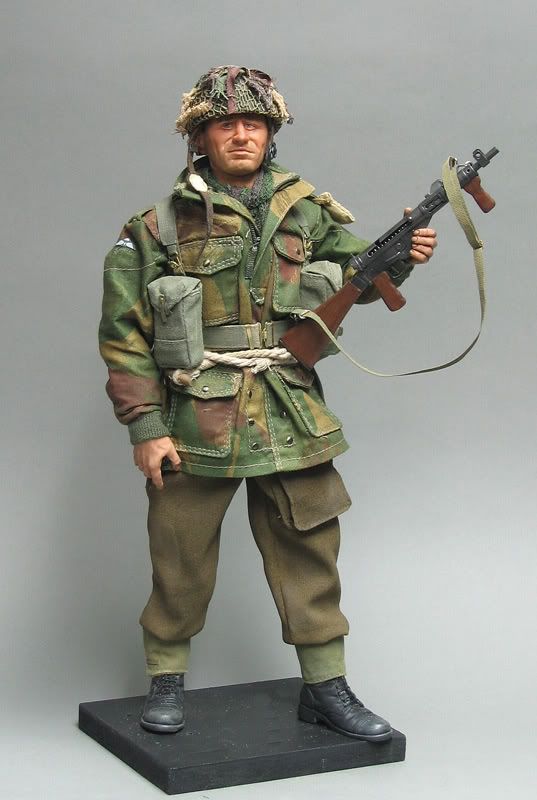
A Para at Arnhem : also KG3 , but thinly applied and worn : it can look even greyer than this .
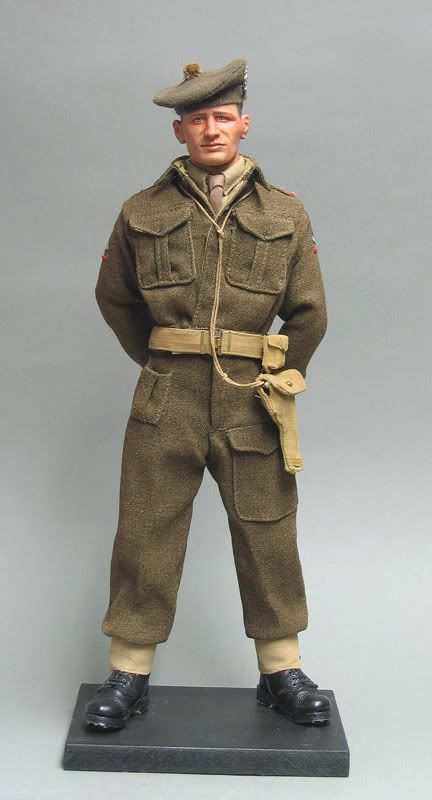
KOSB Officer in Germany 1945 : Buff Blanco for Parade ( use Vallejo Green Ochre 914 ). I don’t have a sample of this , but I’ve used it myself , and this is pretty close . Just a bit lighter than Khaki 61.
Finally two of the figures holding real blanco samples for comparison : thanks to Chris W for these :

_____________________________________________________________
If you go to the trouble of painting the webbing , it might be worth remembering a few other points for authenticity when finishing figures :~
The groundsheet/cape usually carried beneath the flap of the haversack was issued in pale or mid-khaki : unfortunately the commercial 1/6th ones are all green . Repaint , or remake from a piece of suitable fabric .
The same applies to the five pocket rifle ammo bandolier : pale tan, not green .
The e-tool helve should have the metal bayonet fitting at the thin end cut off : these were not really in use before the end of the war .
This figure shows the various colours that might appear on a single man :note the Utility pouches at his feet , still unblancoed :~

This is the Khaki Green Medium Blanco again : rather dirty and worn , and much less bright than the BEF figure .
The gaiters would normally be blancoed the same as the rest of the set . Later versions had leather straps : these were issued as pinkish leather , but would be blacked for parades .
Thanks again to everyone for their help : and if you can find any more COLOUR pics , especially showing the Olive shades , I should be very glad to see them : stick them up in this thread .





























![How To Paint Moonstone’s Nanny | Goblin King Games [7 Days Early Access]](https://images.beastsofwar.com/2024/12/3CU-Gobin-King-Games-Moonstone-Shades-Nanny-coverimage-225-127.jpg)










































Leave a Reply